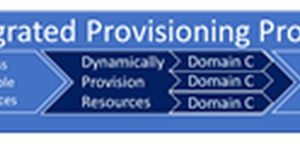
Whitepapers
Is there an economically optimal approach in migration to NFV?

Communication service providers love minimizing their cost base while maximizing their revenue streams. Yes, I may have captioned the obvious here, but it is easy to see that these are conflicting goals as in, it takes money to make money! In recent years, SDN/NFV has been touted as the glue that converges these goals. As such, a wave of migrations started a few years ago, as CSPs began to virtualize their network infrastructures. Along the way, a chilling realization hit the CSPs: the migration is not as easy as advertised as they faced major hurdles in recruiting scarce (and expensive) labor and simultaneously finding ways to beat their competitors by faster migration period. CSPs were also told that SDN/NFV relieves them of vendor lock-in issues. But they soon realized that avoiding vendor lock-in comes with an increase in deployment complexity and costs. It really isn’t simple to integrate multiple best-of-breed discrete system components (hardware, NFVI, VIMs, Open vSwitches, SDN Controller, a host of VNFs and VNFMs). But if CSPs tried to use the other route and use a pre- or partially integrated solution, they faced the issues associated with vendor lock-in.
Read more Is there an economically optimal approach in migration to NFV?
You might like similar whitepapers


THE BUSINESS CASE FOR ADAPTIVE IP

5G Service Assurance: The Case for AIOps

The Economic Benefits of Routed Optical Networks for DCI, Metro, and Long-Haul Applications

The Economic Benefits of Virtual Edge Services

Achieving End-to-End Intelligence in the Cable Access Network

A TCO Comparison of Private WANs vs Managed Network Services for Enterprises

Always On, Active Analytics and AI for Superior Performance in Digitally Powered Enterprises

Middle-Mile Networks Capacity Requirements for Fixed Broadband

Virtualization Journey: Cable Companies Are on Their Way

THE POWER OF DIFFERENTIATION: BUILDING BROADBAND FOR 2021 AND BEYOND

The TCO Benefits of Distributed Broadband Services with CUPS

INTRODUCING xHAUL REWRITING THE PLAYBOOK FOR TRANSPORT NETWORKING IN THE RAN IN 5G

The Driving Factors behind the Telecommunications Shift to Cloud Metro Networks

The Missing Guide in SP Managed Services Profitability

AUTONOMOUS NETWORKS POWER INDUSTRY 4.0

The TCO Benefits of Dell’s Next-Generation Telco Servers

Delivering Policy Continuity at Scale in Cloud IT and Managed Network Services

AUTOMATING 5G ACCESS DEPLOYMENTS

Tunnel-Based versus Tunnel-Free SD-WAN

Maximizing Efficiency Using Standards-Based, Model-Driven Infrastructures in NFV Deployments

The Economic Benefits of the Ciena Virtualized Edge Solution

Meet Market Needs with Software-Enabled Solutions

Nuage/ALU on the VNS Solution in an SP Context

MODERNIZING THE CABLE SERVICE DELIVERY INFRASTRUCTURE

Building Open, Scalable Service Delivery Infrastructures

Hybrid Networks: Integrated Provisioning for Virtual and Physical Networks

Understanding VRAN

Orchestrating Dynamic Enterprise Services

ECONOMIC BENEFITS OF THE VMWARE TELCO CLOUD AUTOMATION AND HORIZONTAL INFRASTRUCTURE

Accelerating Revenue and Innovation in CSPs' Distributed Clouds

The Economic Benefits of Automating Capacity Optimization in IP Networks

Building the Business Case for AI in Wireless Networks: Juniper Mist AI TCO Report

AUTONOMOUS NETWORKS: NOW IS THE TIME

Coriant’s Multi-Sided Platform Partner Program: Market Impact Report

Simplifying IP Networks

Global Pricing for SD-WAN

Disruption Propelling Massive Changes in Video Market

Using Open Virtual RANs in 5G

Huawei ADN Solution Approach to Implementing Autonomous Networks

Key CommSoft Learnings from #MWC19

Propelling Operators to L3 Operations Autonomy and Beyond with Huawei ADN

The Right Container Platform(s) for Modern OSS and BSS

The Evolution of Broadband Traffic: A Forecast for the Americas, EMEA, and APAC Regions

TCO Benefits of Converged 5G Ready IP Transport





